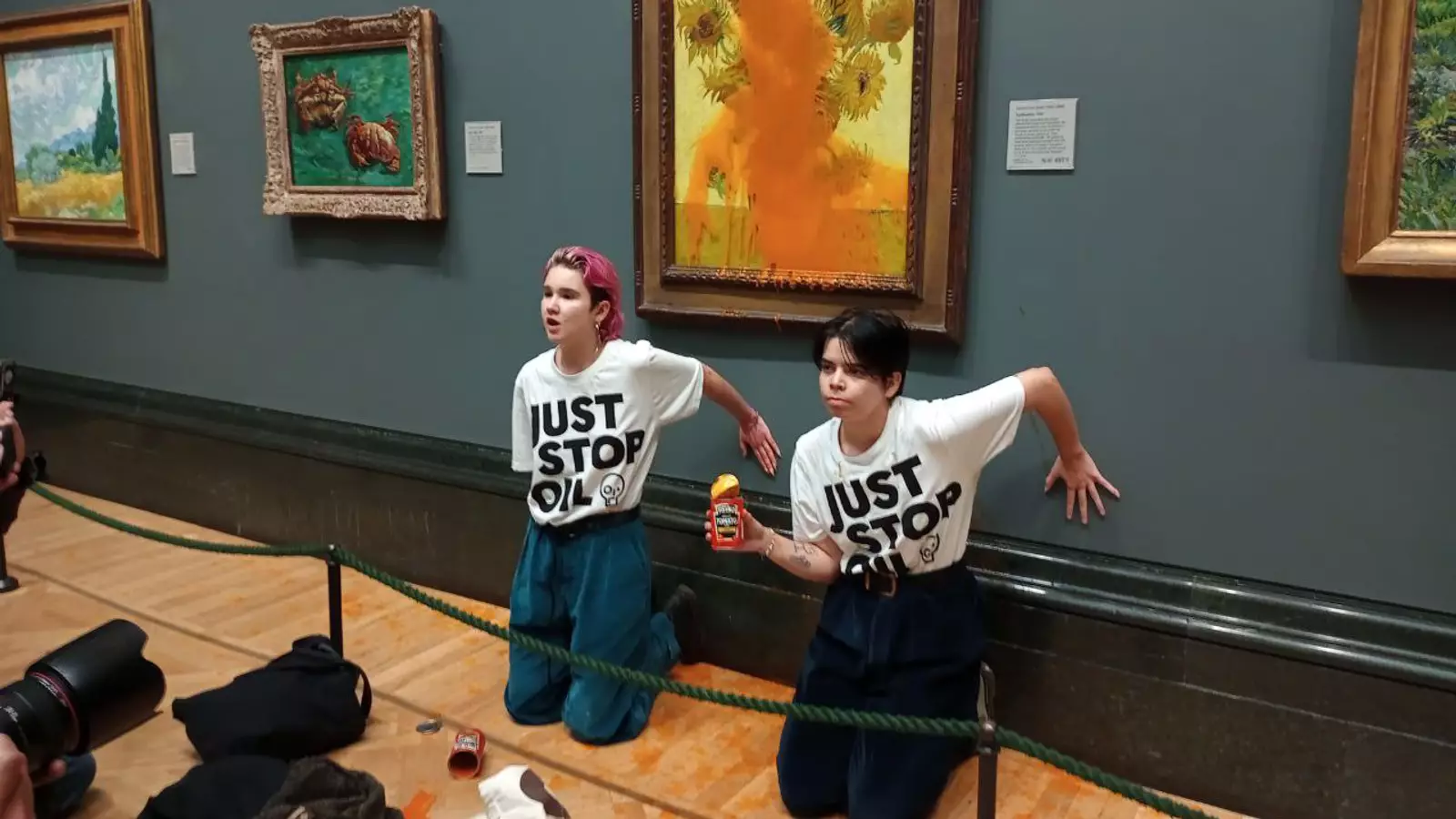In a significant move to bolster the safety of its art collection and visitors, the National Gallery in London has instituted a ban on liquids within its premises, with the notable exception of baby formula, expressed milk, and prescription medications. This decision arises in the wake of numerous alarming incidents where activists have deliberately attacked renowned artworks, securing attention far beyond the art world. Issues of art preservation, visitor safety, and the museum’s operational integrity are at the forefront of this drastic measure, which reflects a growing concern over activism that disrupts cultural heritage.
The decision comes on the heels of repeated assaults on iconic pieces such as Vincent van Gogh’s *Sunflowers*, John Constable’s *The Hay Wain*, and Velazquez’s *Rokeby Venus*. These incidents have not only inflicted physical harm on the artworks but have also generated distress among visitors and staff. The gallery’s statement outlines that the physical integrity of the artworks is compromised, calling into question the very essence of the museum’s mission. Their goal remains to ensure that art is accessible and enjoyable for the public, yet recent events have threatened this objective.
The timeline of these attacks reveals a concerning pattern, particularly with two occurring within just a fortnight. The involvement of activist groups, particularly Just Stop Oil, signals a troubling intersection of environmental activism and art preservation. Prosecutors noted that following the soup-throwing incidents targeting Van Gogh’s *Sunflowers*, damages reached estimations between £10,000 to £20,000. This financial aspect underscores the significant risks associated with such activism.
Adopting stringent security protocols, the National Gallery has communicated the necessity for its patrons to arrive with minimal belongings, explicitly prohibiting large bags. Enhanced entries now feature walk-through metal detectors, an approach intended to expedite security checks while simultaneously safeguarding the artworks. However, museum officials anticipate that these changes may lead to longer wait times during entry, thus reshaping the visitor experience.
While the gallery understands the motivations behind the activism, the museum has emphasized the need for an environment where art can be revered without fear of interference. The institution is striving to balance the pressing calls for social and environmental awareness with its responsibility to protect and preserve cultural artifacts. It urges visitors to approach their collections with caution and respect, reinforcing the narrative that while art should stimulate dialogue, it should not be a target for vandalism.
The National Gallery’s recent actions highlight the complexities facing contemporary cultural institutions in an era where activism increasingly manifests in disruptive acts. As museums navigate these challenges, it’s imperative that the dialogue between art preservation and social activism evolves. The hope is that as these measures take effect, they will not only protect priceless works of art but also promote a constructive conversation around the causes these activists champion. Only time will tell how this delicate balance between access to art and the safety of both the artifacts and their audiences will play out.


Leave a Reply